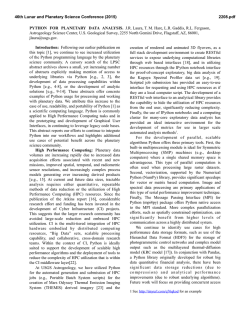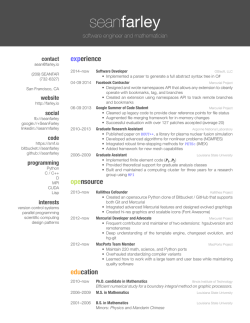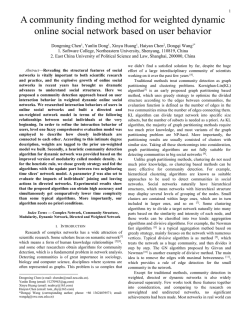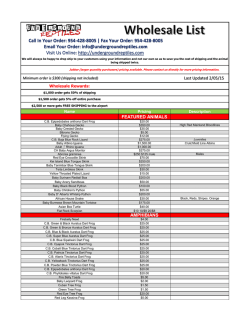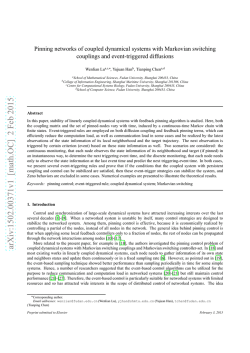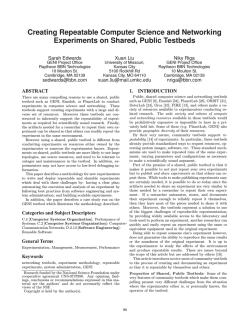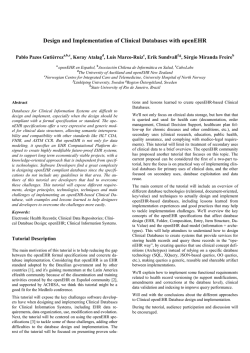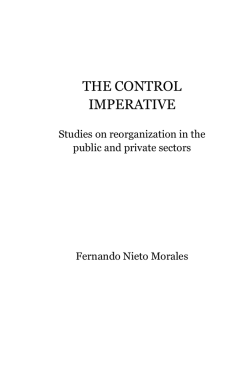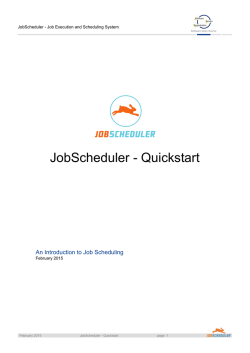
Tutorial 4 - GitHub Pages
IERG4210 Tutorial 04
Deploying your webpage with elastic beanstalk
Shizhan Zhu
1
FYI
• If you still haven’t got your AWS grant codes, please contact me asap!!!
(The homework task needs it!!)
• Please often refer to checklist.pdf to see update (e.g. phase 2 rather than
phase 2A).
• Topics to be covered in Phase 2:
• About introduction to node.js and npm: Workshop on Tuesday (Feb. 3) will mainly
focus on this;
• About basic node project (and environment needed) set up, and deploying your
files in the remote environment: main content for this tutorial.
2
Typical Steps for phase 2.
• Step 1: basic installation -> components used in later steps
• Step 2: Run your hello world node project on your local machine (so it can
be viewed in your local web browser)
• Step 3: Deploy the hello world node project on the remote instance (so it
can be viewed around the world!)
• Step 4: (mainly covered in the work shop) Serve your shop page with the
node project framework.
3
Content for today
• To deploy a “Hello world” page to the remote instance.
• Goal: we can view our released page via a public url! (No longer your local
machine!)
• Pre-requisite: You should have finished Tutorial 3 task.
• This tutorial is a subset of finishing phase 2. After you get familiar with
putting up your page (from this tutorial), you can go on to replace the
Hello world project with your project (required in phase 2).
• Mostly using command, so less figures in this tutorial.
• Please frequently refer to https://github.com/ierg4210/shop-samples,
great document.
4
Step 1: installation
• Python -> virtualenv
• Check if installed: python --version / virtualenv --version
• If yes: return the version codes, if no: command not found.
• Why do we need virtualenv by the way?
• Avoid python configuration conflicts (dependence or versioning issues) between
various projects. Projects in individual environment do not influence each other.
• Why do we need python by the way?
• Because awsebcli is written in Python, and distributed via pip.
• If not installed:
• For python download from https://www.python.org/downloads/
• For virtualenv (after python installed): command: sudo pip install virtualenv
5
Step 1: Under virtual environment
• Git init your current dir (supposed to be where you develop the web page
on your local machine.)
• Create a virtual env: virtualenv “local-dev-env” (Or other name you like)
• Enter the virtual env: . local-dev-env/bin/activate
• . in command line means to fetch all commands in the file onto the
console and execute.
• You will see (local-dev-env) before your path now.
• Tell git not to record changes in local-dev-env folder (where python
packages are installed). Put one line in file .gitignore: local-dev-env/*
6
Step 1: install the required packages
• Install awsebcli:
pip install awsebcli nodeenv
You should install EB CLI version > 3.0!! Use eb --version to check!!!
• Then install node.js using nodeenv:
nodeenv --p
• Use the --version (similar to python and virtualenv) to check if they are
successfully installed.
• How to leave the virtual env? Command: deactivate
• Your project will be developed under the virtual env, and hence can only
work under the virtual env.
7
Step 2: Hello world node project (local)
• Oh, what is npm?
• https://docs.npmjs.com/getting-started/what-is-npm, watch this
interesting video first.
• During web development, projects are divided into several uncoupled
packages, each performs a specific task like an expert. You can either fetch
others’ packages into your projects, or release yours to benefit others.
• Hence npm is the package manager.
• For node.js, npm is served as the default package manager.
• More details would be covered on Tuesday workshop.
8
Step2: the package.json
• It is the packaging format.
• http://browsenpm.org/package.json, click this interesting website, and
your will get familiar with components within this file.
• You can make it in an interactive way:
• Command: npm init
• When prompt these questions, please set the value:
•
•
•
•
Is node project? Yes
Use git for version management? Yes
Entry point? App.js
For detail, you can set values according to https://github.com/ierg4210/shopsamples/blob/master/SETUP-DEVJS.md
9
Step 2: Implement the entry point: app.js
• For the hello world program, you can directly use the sample :
var http = require("http");
http.createServer(function(request, response) {
response.writeHead(200, {"Content-Type": "text/plain"});
response.write("Hello World");
response.end();
}).listen(process.env.PORT || 8888);
• Put them into your app.js file.
• Your local machine will listen to the given port, responed with an OK 10
http.
Step 2: Check your local running status
• Command: node app
• You open a browser, type in 127.0.0.1:8888, and you will find the hello
word page there.
11
Step 3: Make your project in remote instance
• In the virtual env, we have installed the eb package. Now we will use it.
• Check if it exist: eb --version
• Using elastic beanstalk, we would create and connect to an instance in a
different way with last time.
• What is needed for this time based on your Tutorial 3 task:
•
•
•
•
Your aws account;
Your security group;
The key pair for your ssh connection;
Your security credential (I did not cover this last time, so I would first mention this.)
12
Step 3: Create your security credential
• Logging into your AWS account, choose security credential
13
Step 3: Create your security credential
• Inside, choose the access keys
14
Step 3: Create your security credential
• In your case, if you have never created any before, there should be no
items there.
• Click create new access key, the credential id and private key serial. Save
the csv file in safe place so that you can refer to it later.
• When you do the eb init, you need to input the information.
• If you lose the private key (which would be no longer retrieved in the
future), you will no longer connect to your previous instance!!! DO KEEP
YOUR PRIVATE KEY SAFELY!!!
• Please also put your previously created private key pair to the ~/.ssh
directory, so you can connect to your instance under eb method.
15
Step 3: Launch and connect to your instance
• Now we are under eb.
• (1) eb init, need your security confidential;
• (2) eb create, launch new instance;
• Above two steps needs some interactive input, don’t forget to choose
Singapore, and input your instance name appropriately.
• (3) eb open, (please exe this command under terminal in graphical
interface). Since we have put the project (verified in Step 2), now our
hello world page can be viewed globally.
16
Step 3: Launch and connect to your instance
• Now we are under eb.
• (1) eb init, need your security confidential;
• (2) eb create, launch new instance;
• Above two steps needs some interactive input, don’t forget to choose
Singapore, and input your instance name appropriately.
• (3) eb open, (please exe this command under terminal in graphical
interface). Since we have put the project (verified in Step 2), now our
hello world page can be viewed globally.
17
Step 3: Launch and connect to your instance
• It can also be viewed via another machine
18
Step 4: Development locally and remotely
• Now you can develop your web page both locally and remotely.
• Every time you make some update, first git commit, then use eb deploy.
You can see new features added when you open the public url.
• Use eb ssh to ssh connect to your instance. This requires that the private
key pair (*.pem) should be located under ~/.ssh and with 600 accessibility.
• In fact this instance is similar to that we created using user interface.
19
• Thank you.
20
© Copyright 2026


